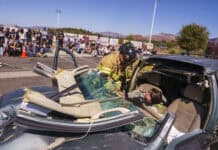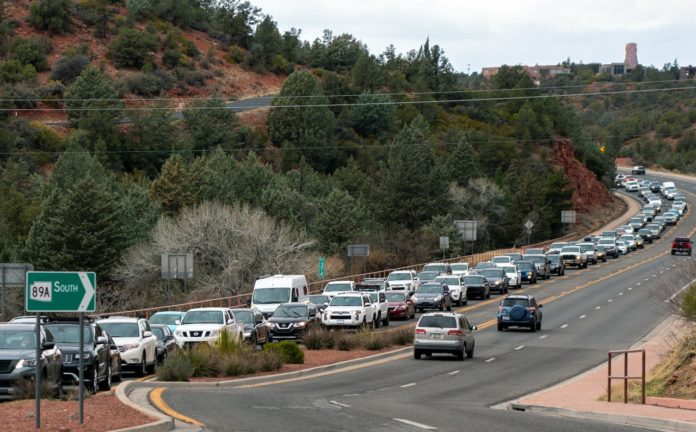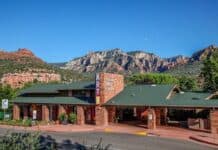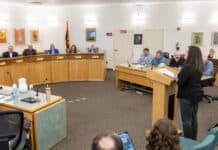When the COVID-19 pandemic reached Arizona last March, one of the first actions by the mayor of Sedona was to shut down all restaurants, bars, theaters, gyms and public venues, followed one week later by the governor of Arizona shutting down “non-essential businesses.”
Per the governor’s order, “non-essential businesses” were “loosely defined” — the exact wording in the executive order in nearly every instance — meaning businesses that chose to remain open had enough wiggle room to logically make the case that they were somehow essential in regards to one of the governor’s exclusions.
That meant that Arizona was closed, but only sorta, kinda. Arizona Gov. Doug Ducey’s stay-at-home lockdown wasn’t really either. It was a suggestion at best, not an order. Police could not compel anyone to return home nor ask why anyone was out. Our state’s Shelter in Place Index, which calculates the percent change of people staying home compared to baseline — i.e., within 100 meters of their home as calculated by anonymous pings on cell phones — only measured a maximum drop of about 18% at the peak.
But with all these businesses shuttered in response to the order and much of the state effectively shut down, especially in metropolitan areas, Arizona residents were left without much to do for recreation, other than go online or exercise on their block. With interstate and air travel also halted or severely limited, Arizona residents were left without any place to go — except to the great wild north of the high desert.
And they have been coming in droves since the spring. After the “lockdown” ended, with regular events and festivals suspended or canceled, Arizonans came north to rural towns like Sedona and to the wilderness areas around Northern Arizona.
In addition to long-time campers, the Sedona area has also seen an influx vacationers and day trippers from throughout Arizona and other states in the Southwest, who chose to visit our area in part because they could not fly to Europe or Asia, nor fly across the country nor have enough vacation time to drive.
With international flights severely restricted both into and out of the United States, vacationers spent their 2020 holidays in Arizona.
Reporter Scott Shumaker is currently working on a series about how the impact from RVs, wildland campers and long-stay visitors on forest land is affecting the wilderness areas west of Sedona, mainly along Forest Road 525 and its branching roads.
A large influx of visitors have also come from California, our most populous neighbor, and visitation from that state was compounded by the fact that California Gov. Gavin Newsom’s lockdowns and restrictions have been the most severe in our region of the country, in sharp contrast to Ducey’s so-called “strict” but more laissez faire attitude to business closures and travel limitations.
As businesses opened up in the fall, this influx of tourists only continued. Even now, in the relatively slow January and February, we are experiencing high tourist numbers on our city streets during weekends more on par with the busy rolling spring break period of March and April. Some weekends and even some weekdays see afternoon eastbound traffic on Cooks Hill backed up beyond Les Springs subdivision.
With restaurants’ occupancy limited by state restrictions, Sedona’s eateries are often packed, relatively speaking, and the area’s hotels are also doing fairly well.
Many of Sedona’s retail shops, however, are not seeing the same numbers commensurate with what one would expect from the sheer number of people on the streets. Visitors are coming to see Sedona, but not necessarily spending the same amount they did before COVID-19 emerged.
As the pandemic begins to wane and Americans get vaccinated, we can expect Americans in nearby states to begin to feel safer and travel, but not too far, making Sedona an increasingly busy destination. Our traffic will likely only get worse as 2021 moves along.
Until international travel and domestic flights return to relative normalcy, we can expect an uptick to recreation sites and public lands around Arizona.
Americans are getting vaccinated with three different vaccines at faster rates than other countries, some of which haven’t even started inoculations, meaning Americans will be going overseas long before international tourists begin coming here to replace them.
Christopher Fox Graham
Managing Editor






















